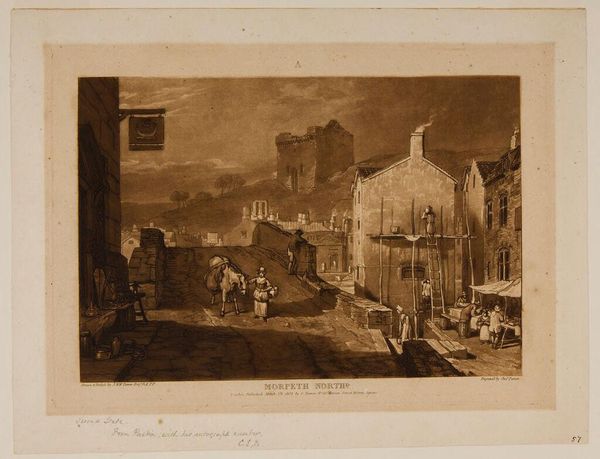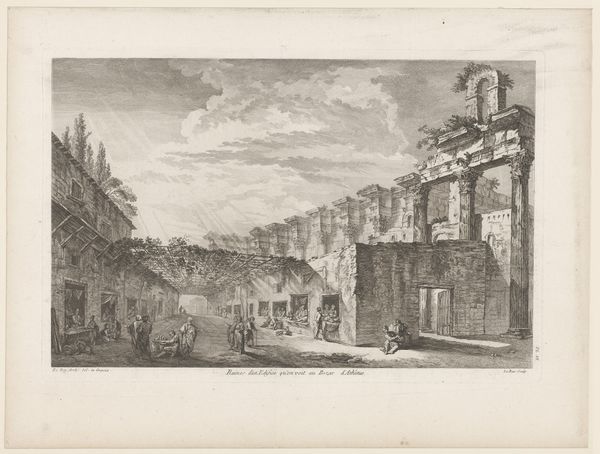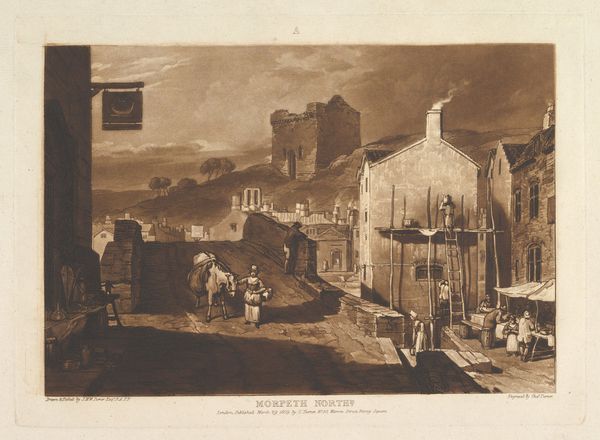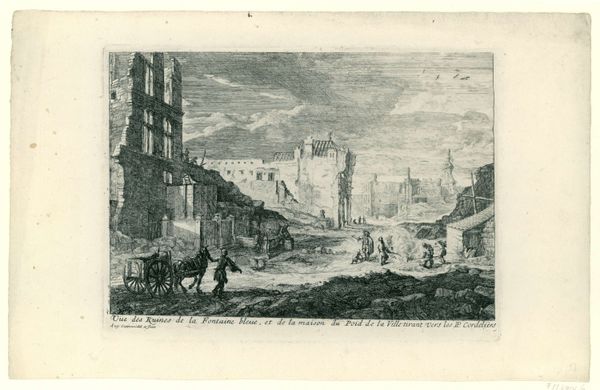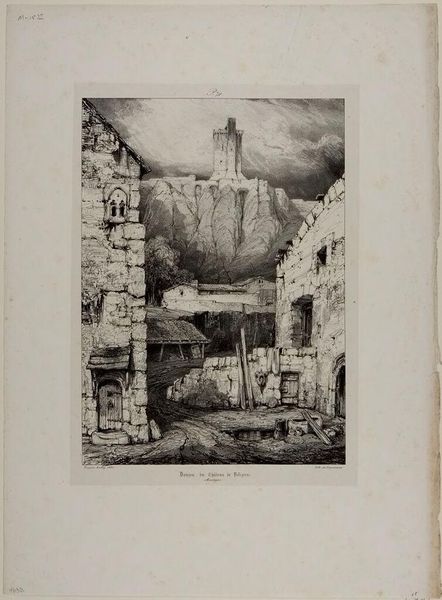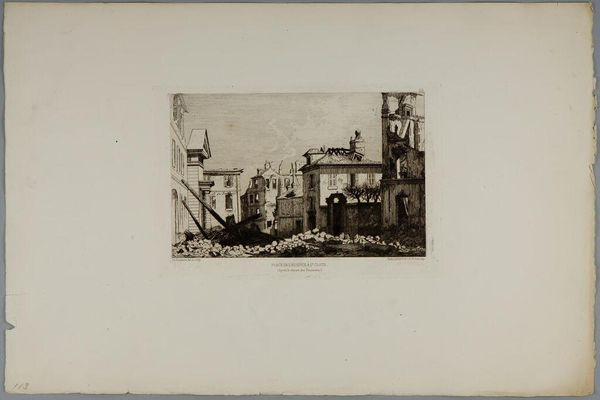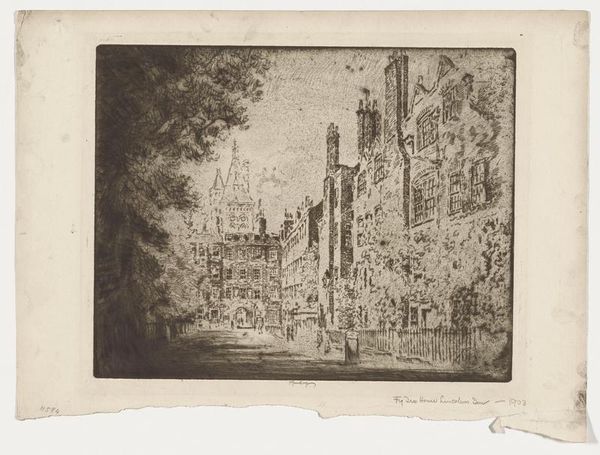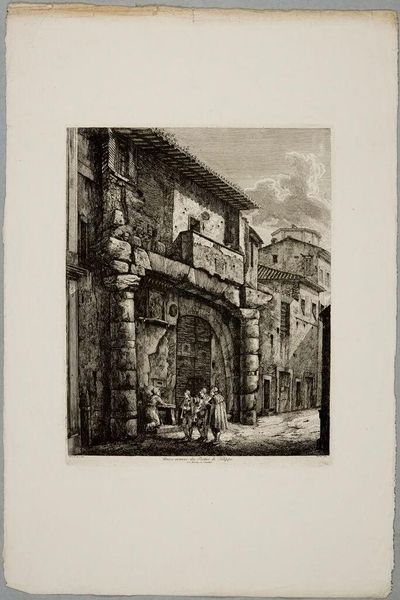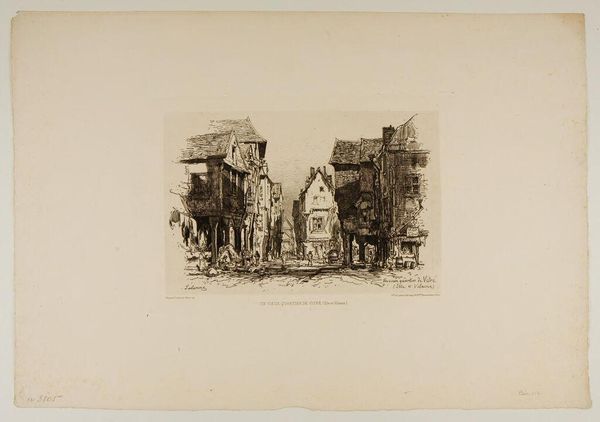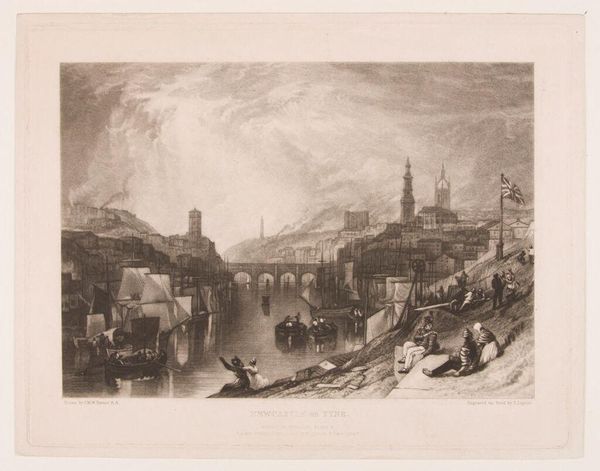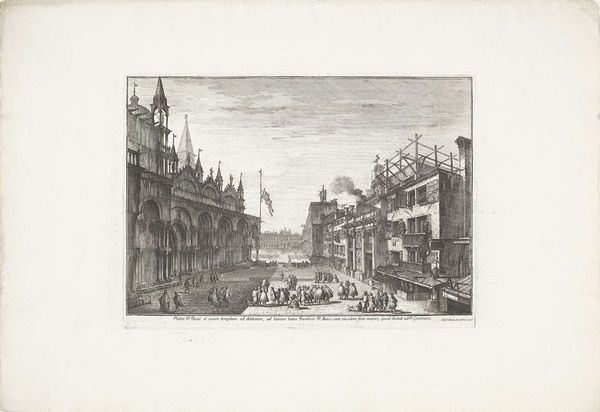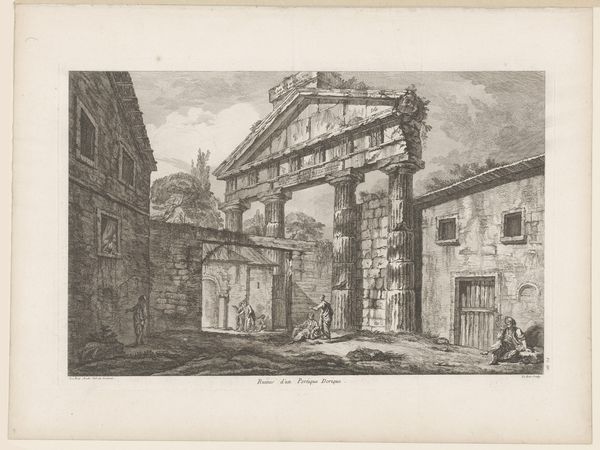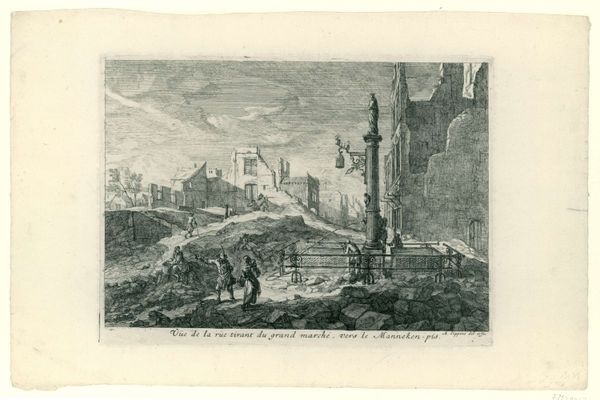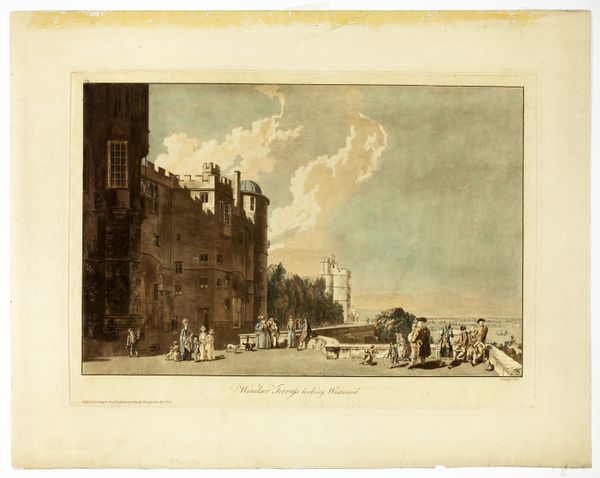
Copyright: CC0 1.0
Curator: Charles Turner's print, titled "Morpeth," presents a compelling scene of 19th-century England. I'm particularly struck by how the aquatint technique mimics the tonal qualities of a watercolor. Editor: The sepia tones lend a rather somber, almost nostalgic mood, don't you think? Notice how the composition leads the eye from the dark foreground up to the castle ruins on the hill. Curator: Absolutely. The printmaking process itself—the labor, the materials, the distribution—speaks to a burgeoning art market and a desire to disseminate images of place. Editor: And those lines and shading work beautifully to create depth and texture, even in this monochrome palette. The artist’s manipulation of tone communicates something about Morpeth’s identity. Curator: Consider the social context: this image, as a commodity, circulated amongst a specific class, shaping their understanding and perhaps idealizing English landscape and life. Editor: I see your point. For me, it’s the skillful handling of light and shadow that draws me in. It’s a powerful demonstration of how formal elements can shape our perception. Curator: Yes, indeed. Examining this print allows us to consider both the artistic choices and the socio-economic forces that shaped its creation and reception. Editor: A beautiful image and an intriguing example of formal mastery and expressive restraint.
Comments
No comments
Be the first to comment and join the conversation on the ultimate creative platform.
